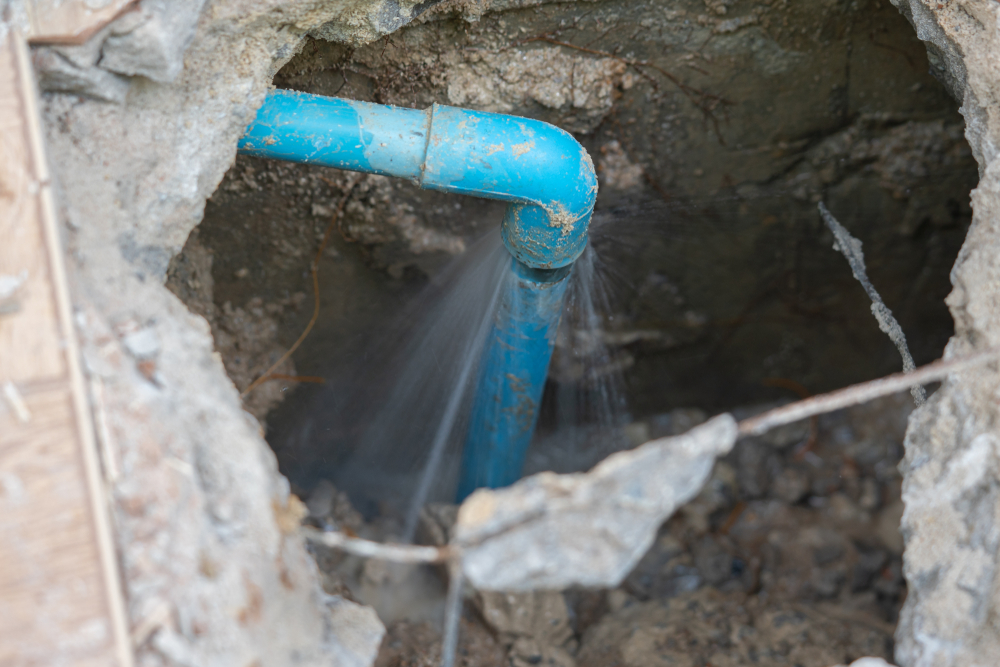On this page in the next paragraph you can locate more brilliant details about Hacks to detect leaks.

Early detection of leaking water lines can reduce a possible catastrophe. Some tiny water leakages may not be noticeable.
1. Examine the Water Meter
Every house has a water meter. Examining it is a surefire manner in which helps you find leakages. For starters, switch off all the water sources. Make sure no one will purge, use the faucet, shower, run the cleaning device or dishwashing machine. From there, most likely to the meter and watch if it will alter. Given that no one is using it, there must be no activities. That shows a fast-moving leakage if it relocates. Likewise, if you spot no changes, wait a hr or 2 and also examine back once more. This suggests you might have a sluggish leak that might even be underground.
2. Check Water Intake
If you detect sudden modifications, in spite of your consumption being the very same, it implies that you have leakages in your plumbing system. A sudden spike in your expense shows a fast-moving leakage.
On the other hand, a constant increase each month, despite the same routines, reveals you have a slow leakage that's likewise gradually rising. Call a plumber to extensively examine your residential or commercial property, especially if you feel a cozy location on your floor with piping beneath.
3. Do a Food Coloring Test
When it comes to water consumption, 30% comes from commodes. If the color in some way infiltrates your dish during that time without flushing, there's a leak in between the container and bowl.
4. Asses Outside Lines
Don't forget to inspect your exterior water lines also. Test spigots by attaching a garden pipe. Needs to water seep out of the connection, you have a loose rubber gasket. Change this and guarantee all connections are tight. It will certainly aid obtain it skillfully took a look at as well as preserved yearly if you've obtained a lawn sprinkler system. One little leakage can squander tons of water and also spike your water bill.
5. Inspect as well as Analyze the Situation
Home owners ought to make it a behavior to check under the sink counters as well as even inside closets for any bad odor or mold development. These 2 red flags indicate a leakage so punctual interest is called for. Doing regular inspections, even bi-annually, can conserve you from a significant trouble.
If you know your house is already old, maintain a careful eye on your heating systems, tubes, pipelines and so on. Check for discolorations and compromising as the majority of home appliances and pipelines have a life span. They will also normally wear away because of tear and put on. Don't wait for it to rise if you think dripping water lines in your plumbing system. Call an expert plumber right away so you do not end up with a dreadful mess in your home.
Early discovery of leaking water lines can alleviate a possible catastrophe. Some small water leaks might not be visible. Checking it is a guaranteed means that assists you uncover leakages. One little leakage can throw away tons of water and increase your water costs.
If you presume dripping water lines in your plumbing system, don't wait for it to escalate.
How to Know If Your Home Has a Hidden Leak
Water Meter Reveals Inexplicable Water Usage
If you’d like to test whether or not there’s a leak somewhere in your home, you can do this using your water meter. Here is how to conduct the test:
Don’t use any water in your home for at least 30 minutes; this also means not turning on faucets or water-using appliances.
Go outside, and check your water meter for activity.
If your water meter shows that there was activity, even though no one was using any water, this proves that there is a leak in your home.Visible Mold or Mildew Growth
Leaks behind walls create moist, dark environments that allow mold and mildew to grow and thrive. Eventually, you might see mold growth forming on the wall closest to a hidden leak.
If mold is growing in an area that receives a high amount of moisture, such as a bathroom, it may simply be an indication that better ventilation is needed. However, if you see mold growth on a wall or the ceiling in an area where you would not expect, you probably have a hidden leak.
Musty, Mildew Odor
Sometimes you might not be able to see the mold or mildew that is growing as a result of a leak. However, the smell can give the problem away just as easily. If you catch a whiff of something musty, there’s a good chance that old water is collecting somewhere in your home that you can’t see.
Stained/Warped Walls, Ceilings, or Floors
When your home soaks up water, a variety of red flags can become visible, including ceiling stains, bubbling drywall, warped walls, and sagging floors. While these issues can be caused by excess humidity, they can also be signs that a pipe or plumbing connection has started leaking behind your walls.
Inexplicably High Water Bill
After a while, you get a general sense for what your water bill should be. If you own a pool or sprinkler system, your bill will tend to be higher during summer. However, if you receive a water bill that seems especially high, and you can’t figure out what caused it, then you may have a hidden leak somewhere that’s increasing your bill.
https://www.plumbingjoint.com/blog/2019/july/how-to-know-if-your-home-has-a-hidden-leak/

We had been shown that editorial on Finding hidden leaks through an associate on another blog. Enjoyed reading our review? Please share it. Help someone else locate it. We recognize the value of reading our article about Finding hidden leaks.